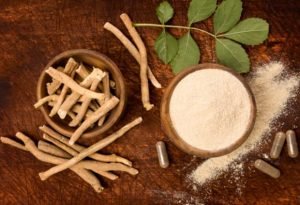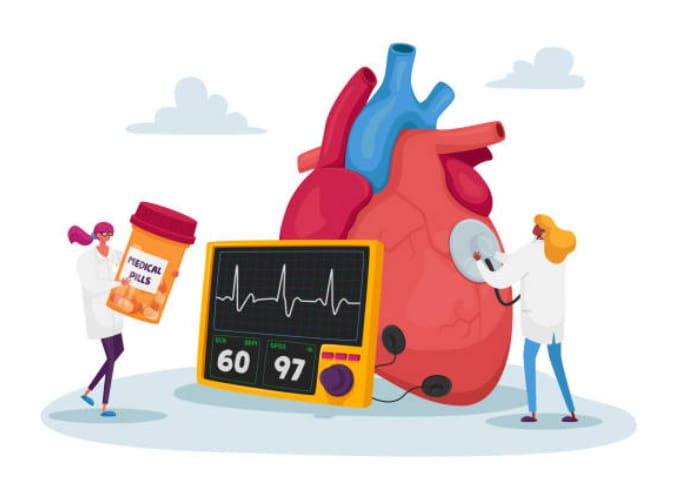
by admin | Jan 7, 2022 | Fitness
Know Your Anatomy | Abs VS Core
Getting six pack abs is perhaps one of the most common goals that trainees are looking after.
However, the six-pack is just one of the components of your abdominal musculature so it is a good idea to learn how to differentiate between the six-pack and the core.
In knowing the differences between the two, you will be able to create a much stronger core, overall.
This article is dedicated specifically to explaining the differences between the two, so let’s get to it!
The 6-Pack
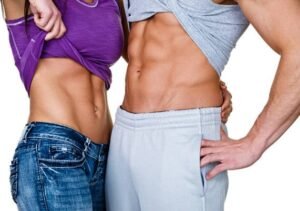
It is a fact that a well-chiseled set of abs can make or break your physique, as it makes up a large portion of the front side of your torso.
The six-pack is technically 1 single muscle, called the “Rectus abdominis” and its main function is to move the body between the ribcage and the pelvis.
This muscle is targeted when you do exercises that make you curl your torso, or lift your legs/knees up.
Now, oppositely, the CORE is a group of muscles and as a matter of fact, the rectus abdominis is a part of your core.
Certainly, because of the fact that the core is a bunch of different muscle groups, it has plenty of important functions, including but not limited to:
- Maintaining organ position
- Spinal support
- Stabilization
- Breathing assistance
- Balance
What Is The Core Made Of?
Alright so now you learned the basic difference between the six-pack and the core – The six-pack is a part of the core, which serves a variety of different functions.
So now you know the difference: The abs are a single muscle group, while the core is a set of muscles that includes the abs.
The abs, obliques, mid and lower back, and glutes are the main core muscles.
Try to feel your core engaging the next time you do a gym exercise like cable triceps pushdowns.
When it does, it is stabilizing the movement and helping you to remain in a static, upright position.
Unlike the abs, which serve only one function, the core is much more versatile.
To say the least, the core contains muscles that are deep and, for most trainees, unknown or ignored.
They are ignored often, because most people just focus on the superficial abdominal musculature (the six-pack).
And though the six-pack looks cool, you must not ignore the other components of your core musculature, as they will help you perform better overall.
Athletes who focus on the heart are much more stable and healthy during dynamic physical activity than those who only exercise their “six-pack.”
Furthermore, having a solid core is a great way to avoid certain injuries that are due to underdeveloped core musculature.
How To Train Your Core

This article was written for the sole purpose of instilling in you the belief that your mid-section is much more than a good-looking six-pack.
The six-pack is just one of the components of your core musculature, meaning that you should focus on that… And more!
Besides training the six-pack, you should also target the lower back, obliques, glutes and inner abdominal muscles.
In doing so, you will not only develop a good-looking set of abs, but also a functional core that will help you with every other exercise, as well as your overall athletic performance.
Top 5 Abs & Core Exercises
Now here are our best picks for exercises which you can use to target the six-pack and the core.
You can include this in your regular training routine, but make sure that you are not doing them the day before heavy compound movements like squats and deadlifts, as this may compromise your performance and stability on those exercises.
#1 Floor crunch
The crunch is the most famous abs exercise and even though many people dismiss it, it can be a viable tool for six-pack development.
One of the best variations is the floor crunch, during which you only flex the abs, without getting your torso completely off of the ground.
This allows for a strong, prominent contraction, which will inevitably bring better development of your abs.
#2 Hanging Leg Raises

The hanging leg raise is another great abs and core exercise, which can help you strengthen your six-pack and other stabilizing muscle groups.
The tricky thing with this exercise is getting into a rhythm, without swinging the torso out of control.
This is only possible with a greater activation of the stabilizing core muscles, making it an overall perfect core exercise.
If this exercise is too hard for you, you can do a hanging knee raise, where instead of lifting your legs straight, you only lift the knees up towards the chest.
#3 Twisted Hanging Leg Raises
As we mentioned, the six-pack is just a part of your core and on its sides, you can find the obliques.
A well-developed set of obliques gives a complete look of the midsection and one of the best exercises to target them is the twisted hanging leg raise.
This is essentially the same as a hanging leg raise… But with a twist!
By twisting the legs to the side during the raise, you allow for good oblique activation, making it a perfect exercise to get totally chiseled obliques!
#4 Plank
So far, all 3 exercises are dynamically involving, meaning that there is a phase of contraction and then relaxation.
Truth is however, that the core and the abs not only provide for dynamic strength, but also static such.
If done right, the plank can be a great tool to develop static strength, which in turn will help you not only have better-looking abs, but also, a more stabilized and balanced core overall.
#5 Stomach Vacuum
Usually, most people train abs because they want a better-looking midsection and waist.
Well, though it is not a very common exercise, the stomach vacuum is a thing you can do to make your waist smaller and tighter.
Besides that, it also engages the inner abs musculature, making it a perfect exercise for overall stability and abdominal control.
The exercise is simple – Take a deep breath, exhale slowly while flexing the abs, then suck your stomach in and straighten the torso.
Once you do that, you can either hold the vacuum statically or play around with the abdominal muscles and flex them.
This exercise is best done on an empty stomach and you should get into it gradually, because if you are not used to this type of flexion, you might trigger your gag reflex.
Conclusion
Your core is much more than just your six-pack, meaning that you are better off doing more than just crunches.
Think of your core as the foundation of your body, which helps during most movements and especially more dynamic, athletic types of activity.
Diversify from the thousands of crunches and include exercises like side twists, leg raises, hyperextensions for the lower back and even stomach vacuums!
Do all this and you will improve your core much more than you thought possible!
Don’t limit yourself.

by admin | Jan 7, 2022 | Diet
plant protein| sources of protein for vegetarians
We can safely say that protein is the best-known nutrient in food for active individuals.
The benefits of it are nearly endless, especially for people involved in vigorous training.
Many cells, tissues, blood, and antibodies can be rebuilt using protein, which makes it a vital component of our recovery.
I mean, think about it – You ARE protein for the most part.
Most of your tissues, hormones, and enzymes are made up of some sort of protein.
But really, protein is a controversial topic, especially when it comes to the source of it.
In this article, we’re going to look at plant protein and tell you everything you need to know about it.
Now let’s get to it!
Plant VS. Animal Protein
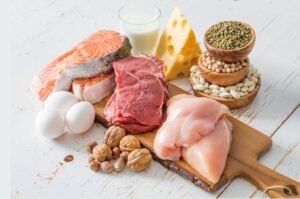
There are two types of protein-containing foods – Complete and incomplete.
Whether they are complete or incomplete depends on the amino acid profile of that food.
Complete proteins contain all essential amino acids and are usually animal foods.
On the other hand, we have plant foods, which have an incomplete protein content, due to the fact that most plants lack certain essential amino acids.
Now, even though animal products are by far the easiest and most efficient way to get your full amino acid profile, you can do the same with just plants.
The simplest and best way to do so is to combine different sources of plant proteins (i.e beans and rice).
In doing so, you will allow each food to compensate for the lack of certain amino acids, in the food it is combined with.
This is in fact one of the main principles of vegetarian and vegan nutrition, as it allows you to meet your daily protein needs with ease!
Now, it is usually considered that plant-based individuals are severely deprived of protein.
However, this is not really a fact about vegan nutrition.
The fact is that if a plant-based individual has a rational, balanced nutrition plan, there will be no deprivation of protein!
The Best Plant Protein Sources

Nuts, peas, beans, soy products, and grain plants are some of the best plant protein sources that can replace conventional animal products.
Different proteins are found in these various foods, each with its own set of amino acids.
The facts? All of these products are at the top of the list of plant protein sources!
Nevertheless, there are MANY other plant products that you can use to meet your essential protein needs.
Below is a list of the most common plant-based products and their protein content (per 100g).
| Plant foods |
Protein content per 100 gr |
| Avocado |
2 |
| Asparagus |
2.2 |
| Almonds |
21 |
| Bananas |
1.09 |
| Beans |
21 to 25 depending on the type of beans |
| Broccoli |
2.82 |
| Brussels sprouts |
3.38 |
| Short grain white rice |
6.5 |
| Long grain white rice |
7.13 |
| Medium grain white rice |
6.5 |
| Mushrooms |
1.8 |
| Canned mushrooms |
3.4 |
| Green peas |
5.42 |
| Green beans |
1.82 |
| Green olives |
1.03 |
| Kale |
2 |
| Apricots |
1.4 |
| Non-peeled potatoes |
2.02 |
| Cauliflower |
1.98 |
| Long grain brown rice |
7.94 |
| Medium grain brown rice |
7.5 |
| Cashew |
18 |
| Kiwi |
1.14 |
| Iceberg salad |
1.2 |
| Dill |
1 |
| Wheat germs |
7.49 |
| Lin seed |
1 |
| Hazelnuts |
15 |
| Lentils |
26 |
| Pasta |
10.8 |
| Lettuce |
1.21 |
| Oats |
16.89 |
| Walnuts |
15 |
| Eggplant |
1 |
| Millet |
11.02 |
| Rye |
10 |
| Sweet potato |
1.57 |
| Soy |
36.9 |
| Spinach |
2.86 |
| Sesame |
18 |
| Pumpkin |
1 |
| Zucchini |
1.2 |
| Nuts |
26 |
| Peanut butter |
25 |
| Bread |
7.1 |
| Corn |
9.42 |
How Much Protein Should You Eat?

This is perhaps one of the most frequently asked questions in the fitness world, whether it’s about fat loss or muscle gain.
Now, there is no definitive answer to this question, due to the fact that we all process and use protein at slightly different rates.
Nevertheless, there are general guidelines, which recommend consuming 0.8-1g of protein per lb. of bodyweight.
The more muscle mass you have, the higher on that range you would be.
For instance, if you weigh 200 lbs and have 10% body fat, you would need right about 1g of protein per lb. of bodyweight.
Oppositely, if you weigh 200 lbs but are at 20% body fat, you’d need less protein.
Whether you’re trying to build muscle or lose fat, consuming ~1g of protein per lb. of body weight appears to be the optimal range, for both muscle gains and muscle retention.
Conclusion
Even though protein from animal foods is superior to plant protein, there really is no reason why someone wouldn’t be able to meet their protein needs by eating just plants alone.
Now, doing this is generally harder, but as long as you combine different sources of plant protein (i.e legumes, grains and beans), you will be good to go!
Ultimately, your best bet would be to consume up to 1g of protein per lb of bodyweight every day, derived from a variety of sources.
Whether you are meeting your needs or not, can be judged on how you perform, recover, and feel.
What is YOUR favorite plant protein source? Comment down below!

by admin | Jan 7, 2022 | Fitness
If you’re trying to lose fat, you have to imminently make a change to your lifestyle, by manipulating your nutrition and activity levels.
However, though fat loss sounds simple, there are many important considerations to take into account when you are going through that period.
One of those is namely the approach to training while losing fat, as it can make or break your process.
In this article, we’ll go through every important detail regarding fat-loss training.
Without further ado, let’s get to it!
The Deficit

One of the underlying principles of fat loss, is the so-called “caloric deficit” which implies consuming less calories than your body requires to maintain its weight and physiological processes.
In doing so, you allow the body to burn more fat than it stores, thus tapping into your fat reserves and burning them off.
Though a caloric deficit is good for fat loss, it inevitably leads to loss of lean body mass (LBM), along with your fat loss.
Your goal while losing fat, is to reduce the losses of lean body mass, in order to retain health, energy and metabolic rate.
Before you get into training during the weight loss phase, make sure you have the following in check:
- Moderate caloric deficit of 400-500 calories
- Sufficient protein of ~1g per lb of body weight
- Good amounts of fat – 0.35-0.45g per lb of body weight
- Sufficient amounts of carbohydrates (remaining calories after calculating protein and fats)
Once you have these in check, you are halfway there on your goal of preserving LBM.
How Training Can Help You

Besides proper nutrition, training is another thing that can help you retain your muscle mass and keep your metabolic rate up.
Though a caloric deficit is the only MANDATORY thing for weight loss, it is highly recommended that you do your workout sessions as well.
In doing so, you will stimulate the muscle protein synthesis inside of the muscle cells and thus, create stimulus for greater retention of lean body mass (including muscle mass).
This is mainly relevant for resistance training, which can also be combined with cardio training.
Important Training Considerations
Before you get into the gym and go all in on your workouts however, you have to factor in a couple of things.
Otherwise, you risk poor recovery and chronic exhaustion.
Here are our best fat loss training tips:
- Lower the intensity (Slightly)
Due to the fact you are in a deficit of energy, you inevitably have to train at a different level of intensity.
Because intensity is demanding by nature, you have to make sure that you aren’t reaching failure far too often.
It is recommended that you work with heavy weights, but not too heavy.
Remember to always leave 1-3 repetitions in reserve, as this is what will allow you to recover well, though you are in a caloric deficit.
- Do More isolated movements

Though heavy, compound movements must be at the core of your fat loss workouts, you can also include more isolated movements.
These exercises emphasize on one specific muscle group and improve the shape and details of the muscle itself.
Looking for aesthetically pleasing muscle separations? Don’t forget your isolations!
Besides helping you retain muscle mass, training is supposed to bring out the fine details of your musculature during the weight loss phase.
This can be done not only through isolated exercises, but also… Flexing!
That’s right – Just flexing your muscles and holding that peak flexion, can help you further chisel your biological sculpture!
On top of that, practicing posing can greatly help with your presentation and how you feel on your own skin.
Flexing in front of the mirror looks stupid? Not anymore, it has benefits!
Conclusion
During a period of weight loss, you lose both fat tissue and lean body mass, which is every other tissue in the body except fat.
Your goal is to not only lose fat, but to also retain as much of that LBM as possible.
To do so, you must ensure that your caloric deficit is moderate and supported by solid amounts of protein, fats and carbohydrates.
After having checked those important points, you must engage in regular resistance training, which is exercised at moderately high intensity levels, without reaching failure.
In doing all of this, you will set yourself up for the healthiest, leanest and happiest version of you!
So, what is there to lose? Go crush your goals!

by admin | Jan 7, 2022 | Fitness
Back pain is one of those things that can impact a large part of your life, especially if you lead a more active lifestyle.
Without a doubt, this common problem is one of the most frustrating problems you may have.
Nevertheless, there are things you can do to prevent back pain, most of which are related to certain movement patterns and positions of the body.
In this article, we’ll give you insight on how to prevent and deal with back pain, so without further ado, let’s get to it!
Keep It Straight…
Unless you want to be The Hunchback of Notre Dame, keeping a good body position (especially during weight training) is essential to preventing and dealing with back pains
Why? Well, because the majority of back injuries are due to a poor, unfavorable body position under significant tension.
Lifting heavy things during everyday activities, or simply being in a bad position for a long time, can progressively damage your spine’s vertebrae.
To further help you understand this, consider the following example.
You went to the grocery to get some water and are going to load your trunk with large water tubs.
Instead of bending over and lifting the bottles up with a curved back, you hoist them up with a neutral spine.
How? Well, begin by bending over with a straight back and dipping your hips down, instead of rounding your spinal column.
Then, use your whole body to lift up the tubs and avoid unfavorable positions of the spine.
Think of it as a squat!
Tips To Prevent Back Pain

Though back pain can be excruciating, there are things you can do to prevent and/or deal with it, if it is already present.
Check out our tips below!
Walk It Off!
Non-strenuous aerobic exercise, such as walking, has been shown to relieve low back pain.
It’s simple, free and easy to incorporate into your daily routine, plus, you can practically do it during any time, in combination with daily chores.
Walk to work instead of taking the bus, go to the store or simply walk your dog!
Walking helps strengthen the muscles that keep the body upright and improves the stability of the spine.
Though it’s the most common human activity, walking is a powerful back pain-relieving exercise!
Stretch

The back was made to move, so restricting movement can make the pain worse!
Try some simple back stretches to relieve back pain and improve movement.
Remember to move slowly, never force your body to stretch painfully, and use a flat, stable surface on which to stretch.
Swim
Swimming can be a great exercise to help relieve back pain because it puts virtually no pressure on your spine and back, as water supports your entire body.
These are the so-called “low-impact” cardio activities, which don’t put stress on your joints and engage the majority of your muscle groups.
However, it is important to sport the correct swimming technique, as certain movements can strain the back and neck and actually make it worse!
Remember, It’s Not Just The Back
In many instances, back pain is simply the result of weakness elsewhere in your body!
As a matter of fact, your back works with many other muscles to keep your body straight and stable.
That group of muscles is referred to as the “core” and its made up of, but not only:
- Abdominal muscles
- Lower back muscles
- Obliques
- Pelvic floor muscles
- Diaphragm
For this reason, developing your core muscles is of prime importance for back health!
Here are our top 5 exercises to help you strengthen your core:
- Hanging leg raises
- Stomach Vacuums
- Lower back hyperextensions
- Side to side hanging knee raises
- Hip thrusts
Including these 5 exercises and adding some resistance to them, will help you strengthen your core all around and thus, take tension off of your back and make it less likely for injury to occur.
Conclusion
Back pain is a common thing for many people, which in most cases is caused by poor body posture during daily and training activities.
If however you maintain good posture and have good exercise form, but back pain still persists, it is best to consult with your doctor/physical therapist.
Remember that back pain must not be taken as a joke – A single wrong movement can lead to excruciating, continuous pain!
This is the exact reason why you should resort to consulting with a medical professional, in case your back pain is significant.
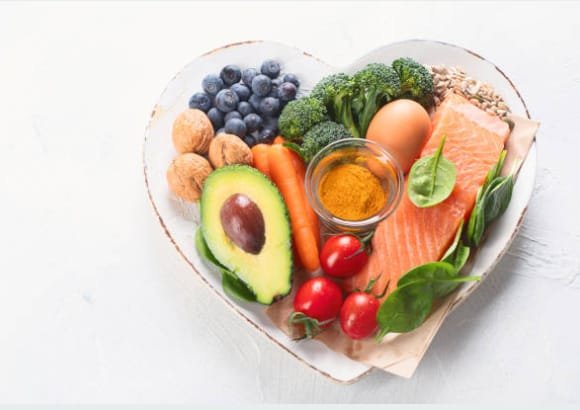
by admin | Jan 7, 2022 | Diet
How Good Is Your Protein? | Biological Value Of Proteins
When most people hear the term “protein,” they immediately think of a particular brand of supplement.
First and foremost, I’d like to emphasize that supplements are not the focus of this article.
Instead, we’ll look at different types of proteins and how they’re processed by the body.
It’s worth noting, however, that the protein you get from supplements and the protein you can find in food is almost the same.
The only exception is that certain powdered proteins are well-isolated and absorb more quickly than others.
That simply means that whey powders aren’t particularly potent or effective.
Supplements were designed to complement and improve your diet plan.
They’re also handy and can be used in a pinch, such as after a workout or even for breakfast if you’re running low on calories.
Let’s Talk Protein

As you probably already know, your body is technically a big, protein-based biological machine.
Aside from water, protein is the most common element we see in the body and more importantly, it regulates a variety of vital processes.
In a sense, protein is the building block of most of your tissues, enzymes, and hormones.
However, not all protein was made equal, meaning that the protein coming from different food sources, will be metabolized by the body in a slightly different way.
That is to say, there are high-quality sources of protein, but also, low-quality ones.
The Biological Value (BV) Of Proteins

Proteins’ biological value is used to determine how well they are digested, absorbed, and preserved by the body after consumption.
To put it simply, the biological value can be used to demonstrate the efficiency of the consumed protein.
Now, there are two primary measures that help us understand more about the biological value of proteins.
Firstly, we have the amino acid profile of each protein-containing food.
For those of you who do not know this, proteins are made from amino acids.
There are 20 amino acids, 9 of which are essential, meaning that the body needs them but can’t produce them on its own.
That is to say that the more complete a certain food’s amino acid profile is, the higher its biological value.
The second thing used to measure the biological value of proteins is protein retention, or in other words, how long the protein stays in the body.
The BV Standard
Now, in nutritional science, the biological value of proteins goes on a scale from 0 to 100.
Whole eggs (both yolk & egg white) are the standard for the biological value of proteins, measuring at 95-100 BV.
If we take the yolk out of the egg, the biological value drops with 5-10 points, down to 90-95.
With whole eggs being the golden BV standard, other foods are compared to them, in order to determine the bioavailability, as opposed to optimal quality protein (whole eggs).
Side note: Whey/isolate protein supplements have a BV of 100+.
Now, this theoretical information is important, but it brings us to the next logical question.
What Are The Best Protein Sources?
Below, we have listed the biological value of the most common protein sources we can find on the market nowadays, including both food and supplements:

- Whey isolate protein blends – 100-150 BV
- Whole eggs – BV 100
- Cow milk – BV 91
- Egg white – BV 88
- Fish – BV 83
- Beef – BV 80
- Chicken – BV 79
- Casein – BV 77
- Rice – BV 74
- Soy – BV 59
- Beans & legumes – BV 49
- Peanuts – BV 43
Now, what this 12-point table means for you, is that your primary sources of protein should be the ones on the top of the list, which have higher biological value.
Nevertheless, you can combine those with other, lesser bioavailable sources of protein, such as plant protein.
Ultimately, your best bet is to put a couple of food sources at the core of your protein intake, while also diversifying with a variety of other food sources.
Conclusion
The biological value of proteins (BV) tells us more about the amino acid content of each food, as well as how long its protein is retained in the body and how efficiently it is used.
Animal sources of protein appear to be superior, due to the better amino acid profile, as well as overall bioavailability.
This is why, if you are not vegetarian or vegan, foods like beef, eggs, fish, and chicken, should make up the majority of your daily protein intake.
If you have any questions, feel free to drop them in the comments below!
























